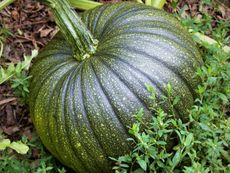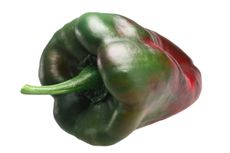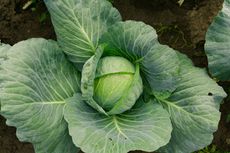Vegetables
There’s nothing quite as good as eating home grown veggies from the garden. While growing garden vegetables may seem daunting at first, learning how to grow vegetables yourself shouldn’t be intimidating. Most vegetable plants are easy to grow, and there are numerous types of vegetables that can be grown to satisfy even the pickiest of eaters. Here you can learn everything from starting vegetable seeds and caring for vegetable plants throughout the season to harvesting your crops and storing them once it’s come to an end.
Explore Vegetables
Vegetables
-

Getting Green Pumpkins To Turn Orange After The Pumpkin Vine Dies
Nothing can be more disappointing than a frost that kills your pumpkin plant with green pumpkins still on it. But never fear, there are some things you can try to get your green pumpkin to turn orange. Click here for more.
By Heather Rhoades
-

Can You Eat An Ornamental Pepper?
Learn about pretty ornamental peppers and varieties that you can try, indoors and out.
By Laura Miller
-

Tomatoes With Sclerotinia Stem Rot - How To Treat Tomato Timber Rot
Tomatoes are also hugely popular with fungus, including those responsible for tomato timber rot. What is timber rot of tomatoes? This article explains more and includes tips for the control of Sclerotinia.
By Kristi Waterworth
-

What Are Dolmalik Peppers: Dolmalik Pepper Uses And Care
Move over stuffed sweet bell peppers, it?s time to spice things up. Try stuffing Dolmalik Biber peppers instead. What are Dolmalik peppers? Click here to find out about growing Dolmalik peppers, their uses and other Dolmalik chili pepper info.
By Amy Grant
-

What Causes Wilt In Southern Peas – How To Treat Southern Peas With Wilt
Southern peas, or cowpeas, are also sometimes referred to as black-eyed peas or crowder peas. With cultivation comes an increase in the incidence of southern peas with wilt. What is southern pea wilt and what causes wilt in southern peas? Click here to learn more.
By Amy Grant
-

Broccoli Plant Side Shoots – Best Broccoli For Side Shoot Harvesting
Did you know the side shoots on broccoli are just as delicious as the main florets? It’s true. Learn more about harvesting and using side shoots here.
By Amy Grant
-
What Is A White Queen Tomato – Tips For Growing White Queen Tomatoes
Something you learn very quickly when growing tomatoes is that they don't just come in red. One of the most impressive white varieties you can find is the White Queen cultivar. Click here to learn how to grow a White Queen tomato plant.
By Liz Baessler
-
What Is A Black Ethiopian Tomato: Growing Black Ethiopian Tomato Plants
Tomatoes aren't just red anymore. Black is one criminally underappreciated tomato color, and one of the most satisfying black tomato varieties is the Black Ethiopian. Keep reading to learn more about growing Black Ethiopian tomato plants in the garden.
By Liz Baessler
-
Southern Pea Cotton Root Rot – Treating Texas Root Rot Of Cowpeas
Are you growing cowpeas or southern peas? If so, you'll want to know about Phymatotrichum root rot, also known as cotton root rot. For information about cowpea cotton root rot and its control, this article will help.
By Teo Spengler
-
Southern Pea Root Knot Nematode: Managing Root Knot Nematodes On Southern Peas
Southern peas with root-knot nematodes can suffer in multiple ways. The pathogen can damage the plants enough to reduce the harvest, but it can also make your peas vulnerable to other infections, including fungal and bacterial diseases. Learn more here.
By Mary Ellen Ellis
-
What Is Pea Aphanomyces Disease – Diagnosing Aphanomyces Root Rot Of Peas
Aphanomyces rot is a serious disease that can affect pea crops. If unchecked, it can kill small plants and cause real growth problems in more established plants. Learn more about aphanomyces root rot of peas and how to manage the disease here.
By Liz Baessler
-

Gonzales Cabbage Plant Info – How To Grow Gonzales Cabbage
: Gonzales cabbage variety is a green, early season hybrid that produces mini heads and takes 55 to 66 days to mature. The firm, softball-size heads mean less waste. They are a perfect size for most family-size cabbage meals and have a sweet, spicy taste. Learn more here.
By Susan Albert
-
Powdery Mildew Of Parsnips – Treating Signs Of Powdery Mildew In Parsnips
Powdery mildew is a very common disease that affects a wide array of plants. Powdery mildew of parsnips can be a problem if left unchecked too. To learn more about how to manage and recognize the symptoms of powdery mildew in parsnips, click here.
By Liz Baessler
-
Spinach Anthracnose Treatment – How To Manage Spinach Anthracnose
Anthracnose of spinach is a disease that?s brought about by a fungal infection. It can cause severe damage to spinach leaves and will overwinter in the garden indefinitely if it?s not taken care of. Learn more about symptoms and how to manage spinach anthracnose here.
By Liz Baessler
-
Pea Powdery Mildew Treatment: Controlling Powdery Mildew In Peas
Powdery mildew is a common disease that afflicts many plants, and peas are no exception. Powdery mildew can cause a variety of problems, including stunted or distorted growth, decreased harvest and small, flavorless peas. Find more information here.
By Mary H. Dyer
-

What Is Bunchy Top Virus Of Tomato Plants
Bunchy Top Virus of tomatoes may sound like a funny disease, but it's no laughing matter. Find out how to detect Bunchy Top and what you can do about it in this informative article. The health of your tomato plants may depend on it.
By Kristi Waterworth
-
Illinois Beauty Info: Caring For Illinois Beauty Tomato Plants
The Illinois Beauty tomatoes that may grow in your garden are heavy producers and originated through an accidental cross. These tasty heirloom, open-pollinated tomato plants are excellent for those that might save seeds too. Learn more about growing these tomatoes here.
By Becca Badgett
